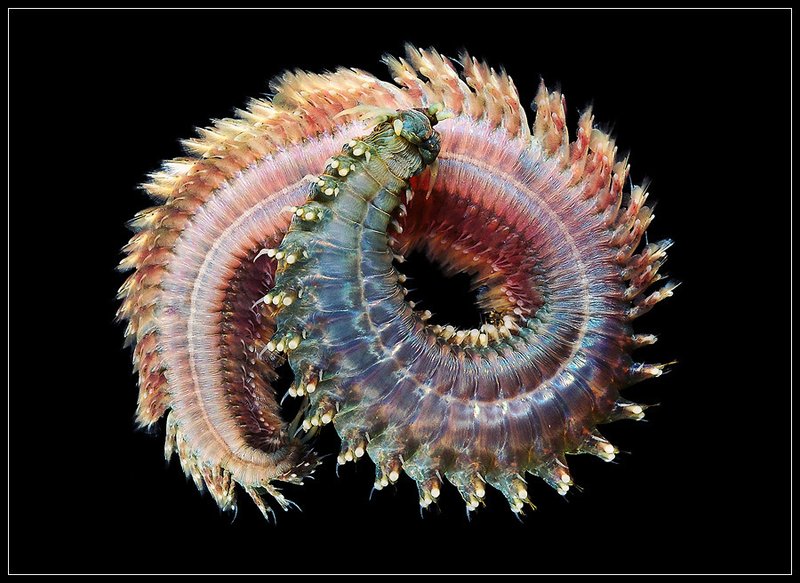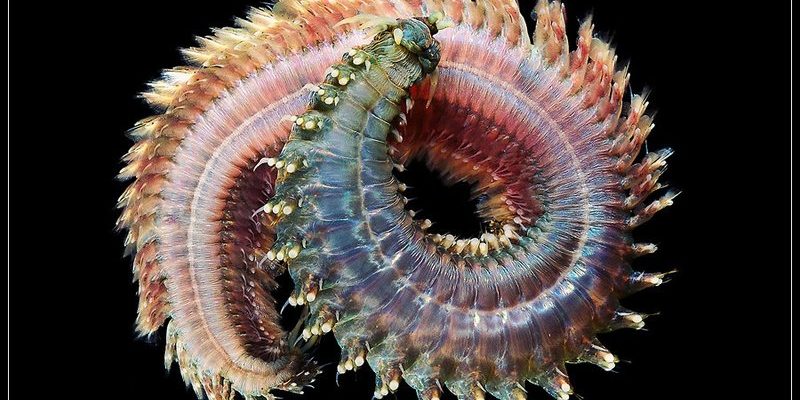
This creature isn’t just a pretty face in the tidal pools; it plays an essential role in its ecosystem. If you were to pluck a Nereis virens from its sandy home and take a closer look, you’d see a worm-like body, bristly appendages, and a lifestyle that’s quite captivating. So, grab your coffee, and let’s dive deeper into the world of this intriguing marine worm!
What Exactly Is a Nereis Virens?
The Nereis virens is a type of polychaete worm, which means it belongs to a group of segmented worms known for their bristle-like structures, called chaetae. These worms typically live in shallow coastal waters and are often found buried in sand or mud. Think of them as little underwater gardeners! They help aerate the sediment as they burrow, which is vital for the health of their ecosystem.
This species can grow up to 10-15 centimeters long, and their bodies are segmented, each segment often sporting a pair of bristly appendages. You might picture them as the ocean’s equivalent of a miniature dragon—though they won’t breathe fire, they do have a vibrant appearance with colors ranging from green to brown, helping them blend into their environment.
Where Can You Find Nereis Virens?
Nereis virens is primarily found along the Atlantic coasts of North America and Europe. They’re often spotted in intertidal zones, which means you can see them during low tide if you’re ever combing the beach. They prefer muddy or sandy bottoms, where they can dig in and make themselves at home.
If you look closely during a beach walk, you might just see these guys peeking out of their burrows! They usually prefer areas with gentle water currents and plenty of organic material to munch on. Speaking of food…
What Do Nereis Virens Eat?
So, what’s on the menu for a Nereis virens? These worm-like creatures are opportunistic feeders, which means they’ll eat whatever comes their way. They primarily consume organic matter found in the sediment, but they can also snag small invertebrates. Think of them as ocean vacuum cleaners, constantly sifting through the sand for a tasty snack.
Their feeding habits not only help them thrive but also contribute positively to their environment. As they consume organic debris and break it down, they’re recycling nutrients back into the ecosystem. This process is crucial for maintaining the health of the marine habitat.
How Do Nereis Virens Reproduce?
Nereis virens have a fascinating reproductive strategy. They exhibit a reproductive behavior known as epitoky. This means they transform into a more mobile form when it’s time to mate. During certain times of the year, usually in the warmer months, they will release their gametes (sperm and eggs) into the water.
Once these gametes mix, fertilization occurs in open water, leading to the development of larval forms that drift away with currents. It’s a bit like sending your kids off to summer camp—exciting and a little nerve-wracking! This reproductive strategy allows the species to spread out and colonize new areas.
Role in the Ecosystem
The Nereis virens plays an important role in its habitat. As a part of the food web, they serve as a food source for various animals, including fish, birds, and even other marine invertebrates. Imagine them as the snack food of the sea!
Their burrowing activity also helps keep the sediment oxygenated, benefiting other organisms living around them. This means they help support a variety of marine life, contributing to the overall health of their ecosystem.
Why Should We Care About Nereis Virens?
You might be wondering why any of this matters. Understanding creatures like the Nereis virens is essential for appreciating marine biodiversity. They serve as indicators of environmental health. If these worms are thriving, it’s a sign that the ecosystem is in good condition. However, if their numbers start to dwindle, it can indicate broader ecological issues.
Plus, these worms are often used in scientific research. They help biologists understand marine environments better and can even give insights into the effects of pollution. By studying them, scientists can work towards better conservation strategies.
The Nereis virens is more than just a worm; it’s a key part of the intricate web of life beneath the waves. From its vibrant appearance and burrowing habits to its role in the marine food web, this creature embodies the complexity of ocean ecosystems.
Next time you’re at the beach, take a moment to appreciate the hidden creatures like the Nereis virens and consider the importance they hold. It’s a little reminder of how interconnected everything is, and how essential each organism, no matter how small, is to maintaining balance in our natural world.

